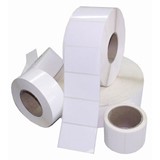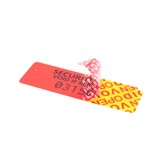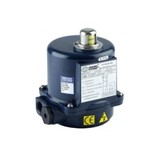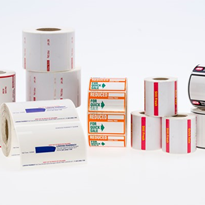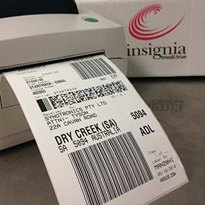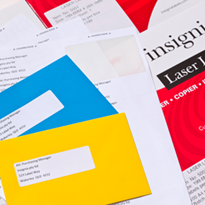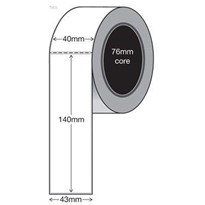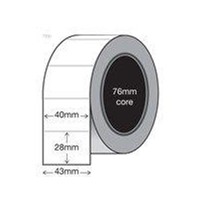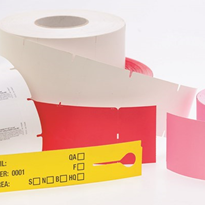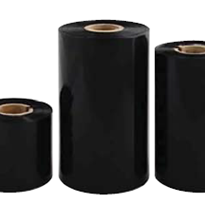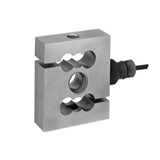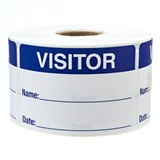Thermal printing technology has become widespread across the globe for printing labels, tags and tickets due to its ease, speed and efficient output. These labels and tags can be the vital link in getting your product to your customer, promoting your brand, identifying your assets, or labelling for compliance. Today there are many different types and grades of labels and label materials available, and each can offer a different benefit. However if the label or label material is wrong for the application, the label can either fail to perform or conversely, offer poor value if 'over-spec'ed, so a comprehensive understanding of how and where the label is used is essential to determine the right label for the job. This introductory guide explains thermal printing technology and explores some operational and lifespan factors that should be considered in determining the ideal material or your label or tag.
Thermal Printer Overview
Thermal printing is a digital printing technology where a thermal printhead uses heat to apply a mark or print to a surface. There are two different thermal printing methods: thermal direct and thermal transfer.
Thermal Direct
Thermal direct printing uses a heat sensitive label paper, which blackens when it passes through the thermal printhead, creating the printed image. The thermal direct method does not use any ribbon or toner, making it a fast and easy option for high volume printing. Since thermal direct labels react to heat, they are also sensitive to sunlight which can cause labels to blacken with prolonged exposure. Also, the thermal image may fade after a significant period of time. Direct thermal printing is ideal for applications such as carton and pallet barcoding; labelling items stored away from sunlight and heat; labelling short-life or high turnover items, or in cold environment applications such as meat packing and perishable goods. Often a smooth top-coat is added to the label material which aids in resisting moisture and scuffing whilst also protecting the print and your printhead.
insignia's direct thermal labels are produced using premium quality, top-coated thermal paper. Both insignia's 'standard' and 'economy' label ranges feature a general purpose permanent, rubber based adhesive with superior tack and adhesion.
Thermal Transfer
Thermal transfer printing uses a heat sensitive carbon ribbon which 'melts' the ink onto the label material as it passes through the thermal printhead. Thermal transfer technology creates a permanent, crisp print, and is ideally suited for long-life product labelling, and for products stored outdoors or in direct sunlight.
insignia's thermal transfer labels are produced with an ultra-smooth coating that creates a permanent scratch-resistant bond with thermal ribbon, and can reduce printhead wear, extending printhead life.
Thermal Ribbon
There are three different formulations of ribbon - Wax, Wax/Resin and Resin.
Wax Ribbons
Wax ribbons are suitable for general purpose printing on paper stocks, making it ideal for carton labelling applications. The high ratio of wax in the formulation means these ribbons have a lower melt point, so a lower heat setting can be used on the printer and high print speeds are achievable. Wax ribbons are the most economical ribbon.
Wax/Resin Ribbons
Wax/Resin ribbons provide a finer image on very smooth, coated and gloss paper labels and some synthetic stocks (e.g. polypropylene, polyethylene, polyolefin). The printed image is more durable than wax, ensuring excellent resistance to scuffing or rubbing which can be a common problem for freight.
Full Resin Ribbons
Full resin ribbons provide excellent performance in harsh conditions including high temperatures, corrosive or UV applications. They are suitable for synthetic and specialty label stocks.
Thermal Ribbon rolls are available with the carbon-side (ink side) facing in or carbon facing out. Different printer makes and models will specify which style of ribbon they require. Also, the roll length of the ribbon needs to match the printer model.
It is important to match the appropriate ribbon to the label material and also ensure correct label printer settings for best results.
Label Material Considerations
There is a wide variety of facestock and adhesive combinations. Understanding the conditions and processes the label faces during its life is crucial when choosing label materials, ensuring the best outcome for the label and product.
Facestock
Labels can be manufactured from paper or a variety of synthetic facestocks. The choice of facestock will depend on the expected service life of the product and the conditions it is expected to withstand. Synthetic stocks (polyethylene, polypropylene and polyolefin) offer properties that can lengthen the life of the label.
Adhesive
Acrylic or Hot Melt adhesives are commonly used. Factors affecting adhesive choice are temperature (both at the time of application and for the service life of the label), the nature of the product's surface, and other conditions likely to occur within the supply chain environment. Adhesives react differently depending on the surface energy of the product, for example carton vs glass vs different types of plastic.
Die Cutting
A die or dies are used to cut the shape of the label. Rectangles, squares, circles, special shapes, perforations, undercuts (die cuts in label liner) are all options available to suit the application. This is a vital part of the manufacturing process as exact pressure is required for clean cutting, while not cutting too deep, causing die strike, and compromising the integrity of the liner.
Finished Format
For thermal printing applications, labels can be supplied on rolls, fan-folded into bundles or even supplied as continuous stock.
For more information on your labelling needs, please contact us.




.jpg)
